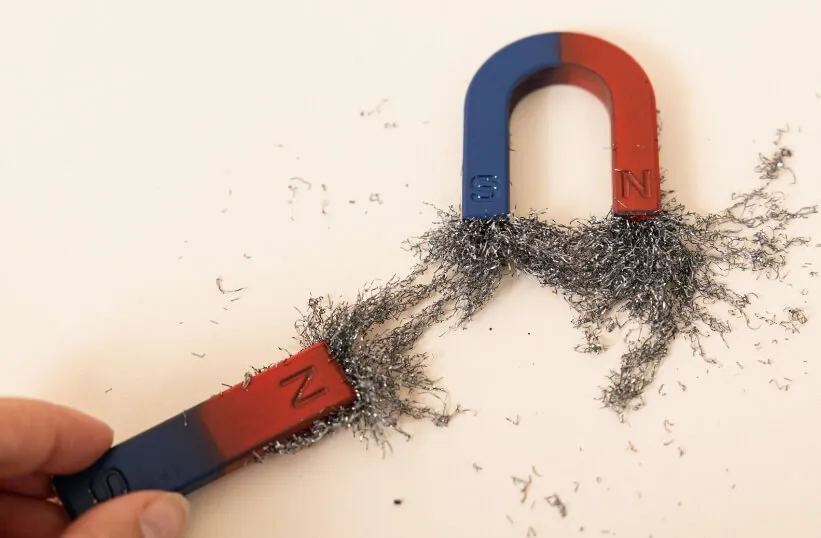Magnetic metals play a crucial role in various industries. Understanding which metals possess magnetic properties can significantly improve your ability to select suitable materials for projects.
The Basics of Magnetism
Magnetism is a physical phenomenon generated by the movement of electric charges, resulting in attractive and repulsive forces between objects. The most common type of magnetism is ferromagnetism, which forms the basis for commonly observed magnetic metals.
Types of Magnetism
There are several types of magnetism, each exhibiting different behaviors in the presence of a magnetic field:
Ferromagnetism: In ferromagnetic materials, magnetic moments tend to align parallel under the influence of a magnetic field. Unlike paramagnetic moments, these moments remain aligned even after the external magnetic field is removed.
Paramagnetism: In paramagnetic materials, magnetic moments are randomly oriented due to thermal fluctuations in the absence of a magnetic field. When an external magnetic field is applied, these moments begin to align parallel to the field, resulting in magnetization proportional to the applied field.
Antiferromagnetism: In antiferromagnetic materials, adjacent magnetic moments align in opposite directions without an external field. In the simplest case, neighboring moments are equal in magnitude but opposite in direction, resulting in no net magnetization.
Ferrimagnetism: In ferrimagnetic materials, aligned magnetic moments differ in size, meaning multiple magnetic ions are present. This produces net magnetization, though not all moments contribute positively to the overall magnetization.
Common Magnetic Metals
Certain metals possess strong magnetic properties, making them essential in various industrial and technological applications. Below is a list of common magnetic metals and their unique characteristics:
Iron
Iron is the most well-known magnetic metal. Its ferromagnetic properties make it vital in numerous industrial applications, from construction to electronics.
Nickel
Nickel is another ferromagnetic metal, often combined with other metals to form alloys. It is crucial in producing stainless steel and various electronic components.
Cobalt
Cobalt exhibits strong magnetic properties and is used in high-performance alloys and magnetic recording media. Its stability at high temperatures makes it valuable in aerospace and military applications.
Steel
An alloy of iron and carbon, steel’s magnetic properties depend on its composition and manufacturing process.
Alnico (Aluminum-Nickel-Cobalt alloy)
Known for its strong magnetic properties, this alloy is used in permanent magnets.
Permalloy
Renowned for its excellent soft magnetic properties, including low loss, high permeability, and favorable response to magnetic annealing. This nickel-iron alloy is widely used in electrical and electronic applications due to its high permeability.
what metals are not magnetic
Most metals show no noticeable magnetism at room temperature, mainly including the following categories:
Completely non-magnetic metals: copper, gold, silver, lead, zinc, titanium, etc.
Weakly magnetic (paramagnetic): aluminum, platinum, tungsten, etc. (generally considered non-magnetic in daily use).
However, there are some special metals:
Stainless steel: most types (such as 304 austenitic stainless steel) are non-magnetic, but some (such as 430 ferritic stainless steel) may contain iron and show weak magnetism.
Manganese (Mn), chromium (Cr): pure forms are antiferromagnetic (macroscopically non-magnetic), but may behave differently in alloys.
Factors Affecting Metal Magnetism
The magnetic properties of metals can vary significantly due to several key factors. Understanding these factors is essential for effectively utilizing magnetic metals in various applications. Below are the primary factors influencing metal magnetism:
Temperature
When magnets heat up, they become weaker. Heat causes internal particles to move faster and become misaligned, reducing magnetic force. This change may be permanent or reversible, depending on whether the temperature exceeds safe limits. Conversely, when magnets cool, they typically become stronger. Lower temperatures slow particle movement, improving magnetic properties and increasing strength.
Impurities
Impurities can reduce saturation magnetization and decrease electrical and thermal conductivity. However, they may also increase magnetic susceptibility and raise the Curie temperature. The Curie temperature is the critical point at which a magnetic material loses its permanent magnetism and becomes paramagnetic. Beyond this temperature, the material’s magnetic moments only align in the presence of an external magnetic field.
Thickness
The thickness of steel affects its ability to absorb magnetism. The strength and effectiveness of a magnet may be influenced by steel thickness. For example, if a magnet requires a 5mm-thick steel surface to achieve full strength, using a thicker steel surface will reduce its magnetic force.
Shear Force
Shear force impacts magnet strength. It is easier to remove a magnet by sliding it across a surface rather than pulling it directly away. Sliding a magnet vertically demonstrates shear force.
Corrosion
In harsh environments, particularly industrial settings, magnets may rust due to humidity, rain, or water exposure, weakening their strength.
Air Gaps
Air gaps affect magnetic circuits by creating non-magnetic spaces between materials. These gaps hinder effective magnetic force application, reducing magnet strength. Causes of air gaps include rust, dirt, paint, or deformation of the steel used.
Methods for Identifying Magnetic Metals
Identifying magnetic metals is essential for their effective use in numerous applications. Various methods, from simple to complex, can help determine a metal’s magnetic properties. Below are the most common methods for identifying magnetic metals:
Visual Inspection
Although not always reliable, visual inspection can sometimes provide clues about a metal’s magnetic properties. For example, rusty iron or typical steel components are usually magnetic.
Using a Magnet
The simplest way to identify a magnetic metal is by using a magnet. If the metal is attracted to the magnet, it is likely ferromagnetic.
Laboratory Techniques:
For precise identification, laboratory techniques are employed:
Magnetic Moment Measurement: Measures the material’s magnetic moment.
Magnetic Susceptibility Measurement: Determines how much a material will magnetize under an applied magnetic field.
Magnetic Property Testing Kits
Commercially available testing kits can help identify magnetic metals through standardized tests and measurements.
Applications of Magnetic Metals
Due to their unique properties, magnetic metals are essential in many industries and technologies. Their applications range from industrial machinery to consumer electronics. Below are some key applications of magnetic metals:
Industrial Uses
Magnetic metals play a critical role in various industrial applications. In motors and generators, they are necessary for construction, providing the required magnetic fields for operation. They are also used in transformers to efficiently transfer electrical energy between circuits.
Consumer Products
Magnetic metals are key components in many consumer goods. In electronics, they are used in components like speakers and hard drives. In household appliances, they appear in items such as refrigerators and washing machines, enhancing functionality and performance.
Medical Field
Magnetic metals are crucial in medical technology. For instance, MRI machines use strong magnetic fields to generate detailed images of internal body structures, aiding in accurate diagnosis and treatment planning.
Research and Technology
Advances in research and technology heavily rely on magnetic metals. Magnetic storage devices, essential for data storage solutions, benefit from these metals’ properties, enabling efficient and reliable data recording and retrieval.
How Can Manek Help
At Manek, we offer our clients a series of customized services specifically for stainless steel and other metals, including investment casting, sand casting, die casting, CNC machining, sheet metal fabrication as well as various surface treatments.
We also provide a variety of other manufacturing capabilities. You can get quotations for free, such as 3D printing, plastic injection molding and powder coating.
FAQ
Copper (Cu) is not ferromagnetic, but it does exhibit very weak diamagnetism, meaning it is slightly repelled by a magnetic field.
No, tin (Sn) is not magnetic in the everyday sense—it does not stick to magnets like iron, nickel, or cobalt
Yes, cast iron is magnetic because it is primarily made of iron (Fe) with a high carbon content (2–4%), and iron is a ferromagnetic material. This means cast iron will strongly attract to magnets, just like pure iron or steel.





